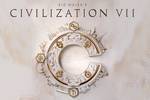
Divinity: Original ...
От «Divinity: Original Sin» к «Divinity: ...Заходил на сайт почти 10 лет назад
Лидер клана Два балла по шкале Апгар 12
Наместник: Puzzle Quest: Challenge of the Warlords около 15 лет




























Magrat
41 год
Женский
Австралия / Канберра
больше 15 лет
157 постов (из них репостов: 0)
1722 комментария
111 cеребряных постов
36 золотых постов
8 бриллиантовых постов
30 рекомендованных редакцией постов
13 рекомендованных наместником постов
Может писать до 9 постов
GA-EP45-DS3L; Core2Quad 9550; Corsair XMS2 Twin2X4096-8500C5; MSI R4870; Logitech G15 + G5
Ныне я близорука, длиннонога, самолюбива, легкоранима, жизнерадостна, злопамятна и легкомысленна. Остальные сложные слова с двумя корнями тоже ко мне подходят.
Интересы: книги - кактусы - компьютеры, крестиком вышивание, карманных календариков коллекционирование
Места, где можно (не)случайно повстречать: ...
Magrat Archer на некоторых англоязычных сайтах, например, .
Сам себя не похвалишь...
Puzzle Quest: Challenge of the Warlords → Зачем нам кузнец?
Puzzle Quest: Challenge of the Warlords → Артефакты, глава вторая.
Puzzle Quest: Galactrix → Заправлены в планшеты космические карты...
Audiosurf, Binding of Isaac, The, Elder Scrolls V: Skyrim, The, Elder Scrolls III: Morrowind, The, Elder Scrolls IV: Oblivion, The, Final Fantasy VIII, Flower, Journey, King's Quest 7: Невеста тролля, Plants vs. Zombies, Puzzle Quest: Challenge of the Warlords, Готика, Готика II, Настольные игры, Сапер, Тетрис
AaaaaAAaaaAAAaaAAAAaAAAAA!!! - A Reckless Disregard for Gravity, Age of Chivalry, Arcanum: Of Steamworks and Magick Obscura, Arx Fatalis. Последний бастион, Audiosurf, Auditorium, Baldur's Gate, Baldur's Gate 2: Тени Амна, Baldur's Gate 2: Трон Баала, Bookworm Adventures Volume 2, Bully: Scholarship Edition, Ceville. Похождения тирана, Crayon Physics Deluxe, Desperados: Взять живым или мертвым, Discworld Noir, Divine Divinity. Рождение легенды, Drakensang: The Dark Eye, Dreamfall: Бесконечное путешествие, Dungeon Keeper, Elder Scrolls III: Morrowind, The, Elder Scrolls IV: Oblivion, The, Elder Scrolls: Chapter II — Daggerfall, The, Endless Forest, The, Fable: The Lost Chapters, Fallout 3, Final Fantasy VII, Final Fantasy VIII, Final Fantasy IX, Final Fantasy X, Flower, Folklore, Frets on Fire, Grim Fandango, Half-Life, Icewind Dale: Долина ледяных ветров, Insanely Twisted Shadow Planet, Jagged Alliance 2: Агония власти, Journey, King's Bounty: Легенда о Рыцаре, King's Bounty, King's Quest 7: Невеста тролля, Loom, Lucidity, Master of Orion III , Maw, The, Might & Magic VII: For Blood and Honor, Mini Ninjas, Neverwinter Nights 2, Neverwinter Nights, Planescape: Torment, Psychonauts, Puzzle Quest: Galactrix, Puzzle Quest: Challenge of the Warlords, Rayman 2: The Great Escape, Rayman 3: Hoodlum Havoc, Severance: Blade of Darkness, Star Wars: Knights of the Old Republic, Sublustrum, Team Fortress 2, The Braid, The Longest Journey, Thief 2: Эпоха металла, Thief III. Тень смерти, Thief: The Dark Project, Vampyre Story: Кровавый роман, A, Viva Piñata, Wizardry 8: Возвращение легенды, Xenus. Точка кипения, Zanzarah: В поисках затерянной страны, Америкэн Макги: Алиса, Анабиоз: Сон Разума, Вангеры, Глаз Дракона, Гоблины 4, Готика, Готика II: Ночь Ворона, Код Доступа: РАЙ, Ларри VII: Секс под парусом, Машинариум, Меч и магия VIII: Эпоха разрушителя, Мор. Утопия, Настольные игры, Никто не живет вечно 2: С.Т.Р.А.Х. Возвращается, Саморост 2. Звезданутое приключение, Сибирь, Сибирь 2, Сломанный меч. Тень тамплиеров, Сэм и Макс: Первый сезон, Трудно быть богом, Тургор, Эадор. Сотворение, Эврика!
Капитан Очевидность, СофтКлаб, agrippa, Aheo, Albuquerque, Algavar, Allin, Alto, Andarial, AnGeLZzZ, AQuaRity, ArDec, askofa, Bafom, Beholder, BENER, Billy-Joe, Cannoneer, Cansei, CoolGoat, DesTincT, Dubitans, Encounter, enpy, Джин Кризсволт, Exstas, Fardeil, feklista, Final, Foxy_Fellow, freemanhck, Frito, Fulier, Gaijin, Гамазавр, GerodotPH, GrafSeth, James, johawhich, kamen, Kavem, keeper69, Kitocat, Kitty_Venom, Kiturami, Котовский, Kripa, KrisM, ksevelyar, Kvester, ladamalina, Lasef, leonidasa, Lifeform, Lopar, MaksSt, Maktub, Malkavian, Marnara, Matthan, max1muz, Midest, Moonwing, MrOrionto, Nas, nordvik, Operator, Pegazs, PhilFry, ppnikpa, Pre_historik, qazqazqaz, radzh, Roger_Wilco, Rowen, Rusminin, RustyHarper, Sensizu, Sergey Serkin, Shakty, Sinmara, Sirin, Solmira, Soth, Surt, Texic, Textoplet, Thiefling, Tielestr, Tomo, Totoro, UMNiK, Unknown, Unleashed, Vakha, Vela, vladforn, werat, Whitesunset, WladySpb, wondervill, woody_woodpeker, Xoxalina, Xsankor, zealot, Доктор
Капитан Очевидность, 1rider, 4q0007, 6o6er_BuTaJIuu, Aenyell, agrippa, ahiskali, akamakc, Albert, AlexanderKuralimov, AlexanderTheGreat, AlexisSK, AlexLich, Alex_Trushev, Algavar, Aliel, Allin, amix, Andre007, andrei96, AnGeLZzZ, AQuaRity, ArDec, Arkanus, Arsi, ЗОИЛ, AStingerK, Basil94, Be45t, bean139, Beavart, Beholder, Beket, BERS, Bigkit, Billy-Joe, blax, Bobman, Borglamot, Bratvan, CameCazee, Cannoneer, Cansei, Catcherko, chemax79, Chili, Coffee, Congenially, crazytoster, Crown_Clown, Dafna14, Dalakus, Damirko, Darth_Malice, DeadlyMooN, Denai, desagr, Dezender, DiabloDLC, Diaraks, DimaZzZ, Dimka, Divash, djinn1kesta, Drake4ree, drakona, DrukqZ-X-Mgr_LE, drwtsn-dll, DUD_MOROZ, Dypumap_38_PyC, El-Tomatto, Energoshoc, Eolas, Джин Кризсволт, Exodus_Hawke, Exstas, Fanatic4dead, FILMoKRUT, Final, Flamma, Flomaster, FOSTER_ok, Foxy_Fellow, Frab, freemanhck, Freska, FruktoZa, Gector99, GeoHot, Gobu, GORadriel, GrafSeth, Grawer, gReeB04ki, guvatara, HAKER95, HannibalKing87, Havoky, Hawli, Henry_Goodman, HOXAJI, hyispas, IIblXHEM, INDIGO_o, intro, ivanst, iXtremeFROST, chjumaliev, johawhich, KATbKEH, katman, Kavem, keeper69, Kellbas, Kennedys, Kilogramm_pure, kiss88, Kitocat, Kitty_Venom, KOI8, Koncyl, koresh144, Kravchuk, Kripa, KrisM, ksevelyar, kvm, K_A_L_T_E_R_, LaCTuK, Lance, langor, Lasef, leonidasa, Li-On, Littlemasta, LiveSaifer, LootHunter, Lossik, Luzefer, M1raMAcs, MaDelAn, mafiozo, Magistr, Maguar, Makarov21, Malkavian, Marnara, MDee, metalhead, Mexanik, Midest, midoru, mike95, Milolika, mobilas, Mokona, mortimer, MrOrionto, MrPatogen, MrRio92, mrrustam, MrWatt, Mr_Moxnat, Mr_Noname, Msabifhe, mushro0m, nanax, Nariall, natalya, Necromant, NoNameNoClan, NonSemper, norgoth, ololo2011, Operator, paver, Pegazs, PhilFry, POKOT, ppnikpa, Pr0odik, PriTVora, ProDoter, Protubero, Raivo, Recron, redfox, Red_ShuXer, remag385, reoneekz, repaly, Rosher, Rowen, RustyHarper, Sajlador, sam7966, SamFisher53, SamuraykO, sanchezz, Scaramush, Scythe_of_Corruption, SergeyTube, sergiyseriy, Serjant, Setarms, Shakty, Shapituk, Snapp, Snicky, Soth, Spoke, stalker_48, Stallone, Stason93, STEPshishka, Стрелок, StrintFire, Surt, Svo_tR, team_game, Textoplet, Thiefling, Thinvesil, thundergan, Tomo, TonyStark15, Totoro, totowko, Tremer, bebo, TuLen, UMNiK, Unleashed, Vakha, vALTER, vikolyada, Viols, vitamin, Vizz, vladforn, Voldemort, werat, Whitesunset, wondervill, woody_woodpeker, Xiao, Xoxalina, xrenogubka, Xsankor, xxxlawlietxxx, y6u, Yaha, YelloW, YouRock, zelegan, Zen547, ZergSC, Zither, Zombakk, Элль

Divinity: Original ...
От «Divinity: Original Sin» к «Divinity: ...
Northgard
Обзор новогоднего обновления – Зимний праз...
ELEX
Обзор Elex.
Ведьмак 3: Дикая Охота
Дополнение "Кровь и вино". Гроссмейстерски...
ELEX
Советы отправляющимся в Магалан.
Cyberpunk 2077
Обзор Cyberpunk 2077
Team Fortress 2
Meet The SniperAudiosurf
Одна из самых известных спид-мет...World of Warcraft
That's the World of Warcraft tha...
ИгроМир
Впечатления от GAMEDEV MEAT UP 2024
Новости
Нововведения «Цивилизации VII». Изменени...
Герои меча и магии ...
Джем: «геройские» новости
СПАРТА-2035
Демо-версия пошаговой тактической игры «Сп...
Игровое железо
Стартовали продажи рекордно легкого и тонк...
Новости
Полюбопытствуй! (#1) — три независимые игры
→
Плюсатор Magrat 45
Плюсатор Magrat 45
Плюсатор Magrat 45
Одно из основных развлечений игроков в TES3 - собрать, да еще и красиво расположить потом.
Жаль, в Обливионе так не получается.
Вот что есть хорошего в "Обливионе" - мод "Брелок", в Морре без него тяжко, да.
Костяные шлемы не люблю - не красивые. Какого-то там червя шлем сдала в музей, Орейна тоже думаю отдать.
Орудия смертоубийства. Всякие артефактные: клеймо Эльтона, Разделитель/Разрубатель, Хризамер, Биполярный клинок, булава Молаг-Бала...
Всякие разности: кольца, амулеты и др.
.
Маграт Арчер -
.
Вообще-то, я заменой текстур не увлекаюсь. Только этот пак для Балморы и понравился. Обычно возникает ощущение "невписываемости" - т.е. очень уж чужеродно смотрится. Сам мир игры действительно можно назвать стильным, хоть и не очень люблю это слово (спасибо художникам и дизайнерам :) И что-то в нем изменять надо бережно и аккуратно.
Плюсатор Magrat 45
Плюсатор Magrat 45
Второе прохождение (бретон, маг):
Пешком (бегом, подпрыгивая) до Балморы, по дороге обрывая все листья с кустов и колдуя что-нибудь в воздух. Оттуда, вступив в ГМ, в Кальдеру (на чердак гильдии), затем в Садрит Мору и долгие занятия самогоноварением (чтобы стать умнее) + прыжки с лестницы (чтобы стать сильнее)... И уровне эдак на 7-м отправилась в Морнхолд (благо про дополнение я старалась сюжетно значимой информации не читать), а вернувшись оттуда в красных шароварах (доспехах королевской стражи), на Солстхейм.
Плюсатор Magrat 45
"Companeros" is one of the pieces that plays at the Day of the Dead Festival in Year 1. The name roughly means "comrades" and alludes to Salvador and his Lost Souls' Alliance, since the festival takes place right above LSA headquarters. To me, all of the traditional folk-sounding music in the game somehow connects to the LSA or to the Temple in Year 4, either as Music of the People or as sacred music. The style is a sort of blend between rural folk music and the sounds of a Mexican mariachi band. To get inspiration and understanding of this kind of music, I did a lot of listening, both to recordings of Mexican folk tunes, and to live mariachis.
San Francisco has an area called the Mission District which has an incredible mix of Latin and Anglo-American cultures. Depending on the club you walk into, you can hear live swing, salsa, modern jazz, acid jazz, punk rock, folk, blues and mariachi bands nearly any night of the week. Most of the musicians who played on the Grim Fandango sound track either live in the Mission District and play these clubs regularly, or were found through contacts I made there. The mariachi musicians who perform in "Companeros" are among these. The band includes trumpet, violin, guitar, a small tenor guitar-like instrument called the vihuela, as well as a beautiful bass guitar called the guitaron.
The Casino Interior music can be found in Manny's casino (in Calavera Cafe) in Year 2, Rubacava. For use in the game, this piece was filtered to sound like it might when played through the cafe's sound system. (As you can see, we aren't strict about having technology from a certain period in Grim Fandango!). You'll also hear just a bit of this music in the cutscene that introduces Year 2.
In classic film noir, Casinos are often portrayed as lively nightspots; I wanted to create a feeling of almost carefree decadence, just a bit edgier than the mood evoked by Rick's Cafe in the film Casablanca. Casino Interior was based partly on the sounds of early Duke Ellington (circa late 1920s) and partly on the small Benny Goodman ensembles that were popular during World War II. (I was definitely thinking of Goodman in the clarinet part). Most of the piece was played by live musicians who are steeped in this kind of music. I think they really make the track speak.
This piece is called Swanky Maximino, and It plays in the office of Maximino, the gambling kingpin in Year 2. I wanted to evoke the sounds of speakeasies of the Prohibition Era, those of the smaller "big" bands that played in clubs in such places as Harlem in the heyday of the Thompson gun-toting gangster. Maximino to me is an archetypal gangster character, a man who prides himself on having arrived in the world, and he has spared no expense in decking out his gambling club to show it. The music he would listen to, and the kinds of bands he would hire to play at the club, would reflect that sense of opulence as well. The main part of the music is inspired by recordings of the early Ellington band, when the Duke led the musical part of the Harlem Renaissance in the late twenties. The bridge, or middle section of the tune, is inspired by the aristocratic sound of bands you might hear in the old Thin Man movies of the early thirties. For the most part, we used live musicians for this recording, and I think they did a great job of capturing the style and musical feel of that era. Their use of period-style mutes and plunger effects on the trumpet and trombones is to me particularly authentic, and gives the tune a comic kind of menace, perfect for Maximino's personality.
Плюсатор Magrat 45
Плюсатор Magrat 45
Плюсатор Magrat 45
Плюсатор Magrat 45